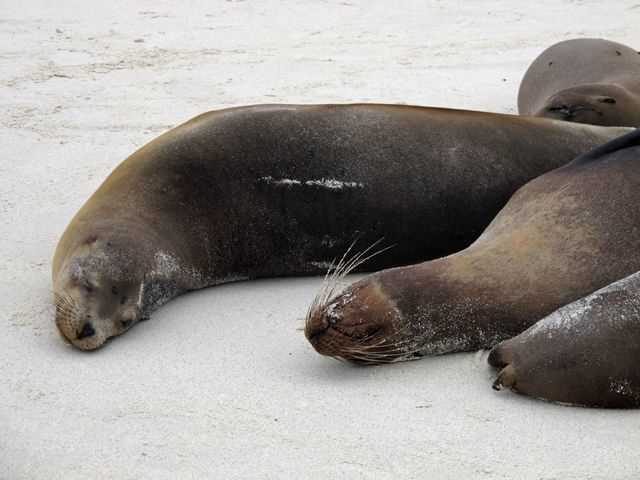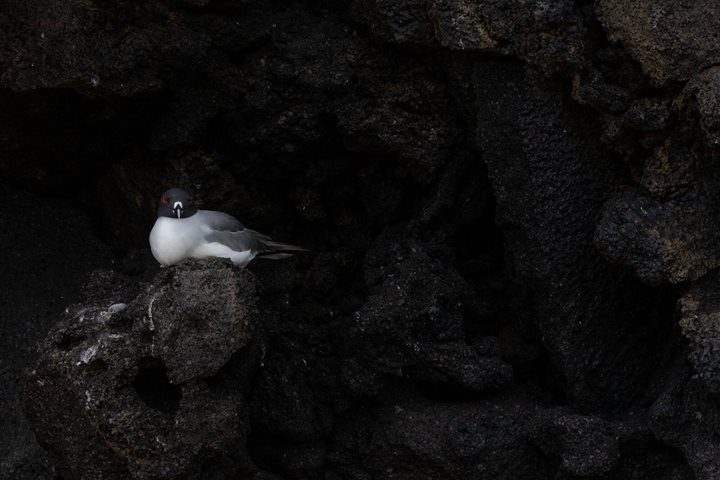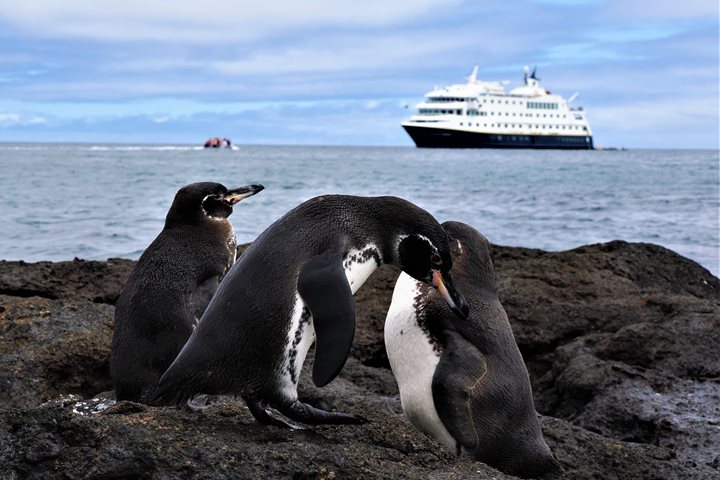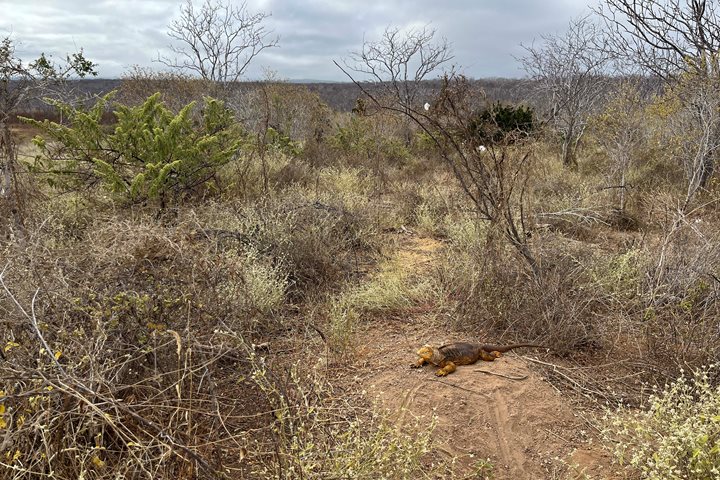Located in the southeast of the Galápagos Archipelago, Española is one singular island. It is right in the path of both the South Equatorial current and the southeastern trade winds, which erode the island particularly in its southern coast, and makes its surrounding waters immensely productive. Numbers of marine birds as their home has therefore chosen Española. One of the most captivating bird species is the waved albatross, endemic to the island. Twelve thousand pairs nest on Española between March and December every year, and today we were fortunate to observe them practicing their very elaborate courtship dances. Another charismatic species found in the island in healthy numbers is the endemic Galápagos sea lions; we are right in the middle of their breeding season so we encountered several mothers and their very young pups along the beaches of Española. A fun creature to observe was the Española mockingbird, one of four species of mockingbirds found in the Galápagos Archipelago. On Española, they are particularly feisty and we could watch them fighting over their invisible territories. We had a windy yet incredible day, as stunning wave action constantly washed the shoreline, making it much more dramatic and beautiful. It was an incredible day, full of wonderful landscapes and amazing creatures only found in these magical islands also known as “Las Encantadas”.
- Daily Expedition Reports
- 13 Aug 2017
Española Island, 8/13/2017, National Geographic Endeavour II
- Aboard the National Geographic Endeavour II
- Galápagos
Gaby Bohorquez, Naturalist
Gaby was born and raised in Guayaquil, Ecuador. Her first job in the Galapagos was on board a 90-passenger cruise ship as the cruise director’s assistant, and she fell under the spell of the Enchanted Isles. She returned to Guayaquil to study at the ...
Read MoreShare Report
Galápagos Aboard National Geographic Endeavour II
VIEW ITINERARYRelated Reports
10/6/2022
Read
National Geographic Endeavour II
Bartolome Island & Sombrero Chino
On National Geographic Endeavour II today, we explored Bartolome, home of a small colony of Galapagos penguins. Bartolome is one of the youngest islands, and it is located next to Santiago Island in the central part of the archipelago. After an amazing sunrise, we went ashore for a walk, and we were transported back to a time when the land was newly formed. We began our day by hiking to the top of a tuff cone known as the islet of Bartolome, named after the First Officer of The Beagle . Walking on this young island allowed us to understand the formation and volcanism of the Galapagos Islands. The rocks are a great way to understand the area and its geology. We spotted a few lava lizards and painted locusts, some of the very few animals on this island. As we reached the top, we had a great view. Our guests enjoyed the magnificence of Pinnacle Rock. After we visited one of the most iconic geological formations of the Galapagos, our breakfast was enhanced by dramatic views of the impressive volcanic landscape. We visited the beach near Pinnacle Rock, where we enjoyed how the sun made the sand sparkle due to a concentration of silica. Later, we went snorkeling along the channel between Santiago and Bartolome Islands. Many of our guests spotted whitetip reef sharks and very colorful parrotfish. The landscape was beautiful with lots of sea stars. We enjoyed the chance to be surrounded by Galapagos penguins and feel accepted as part of this environment. After a delicious Mexican lunch, we had lectures on the photography of reptiles and Darwin. Afterwards, we went to Chinese Hat Islet to snorkel from the Zodiacs. The area is home to a small colony of Galapagos penguins. In a sandy-bottomed, sheltered channel, our guests enjoyed swimming with whitetip reef sharks, rays, and many fish. It was a nice and sunny afternoon. After snorkeling, we had the chance to explore the unique, small volcano that formed an island in front of Santiago on a sunset Zodiac ride. After a spectacular day full of activities in the field, we returned on board. Every day in the Galapagos is an opportunity to reconnect with the beauty of nature through unbelievable encounters!
10/5/2022
Read
National Geographic Endeavour II
Cerro Dragón, Santa Cruz Island
Today, National Geographic Endeavour II visited Cerro Dragon, located on the north part of Santa Cruz Island. We found one of the largest colonies of land iguanas. During our hike, we spotted the iguanas all around the trail. Some basked on the vegetation, and others were active. We saw the zigzag head movement they use to protect their territory and impress females. An Ecuadorian buffet lunch was set up in the dining room. We started with the traditional ceviche and ended with tres leches for dessert! We enjoyed snorkeling and Zodiac rides. We observed wildlife all over the place, including spotted eagle rays, sharks, blue-footed boobies, great blue herons, marine iguanas, and hundreds of other animals. They all reminded us why the Galapagos is so special.







